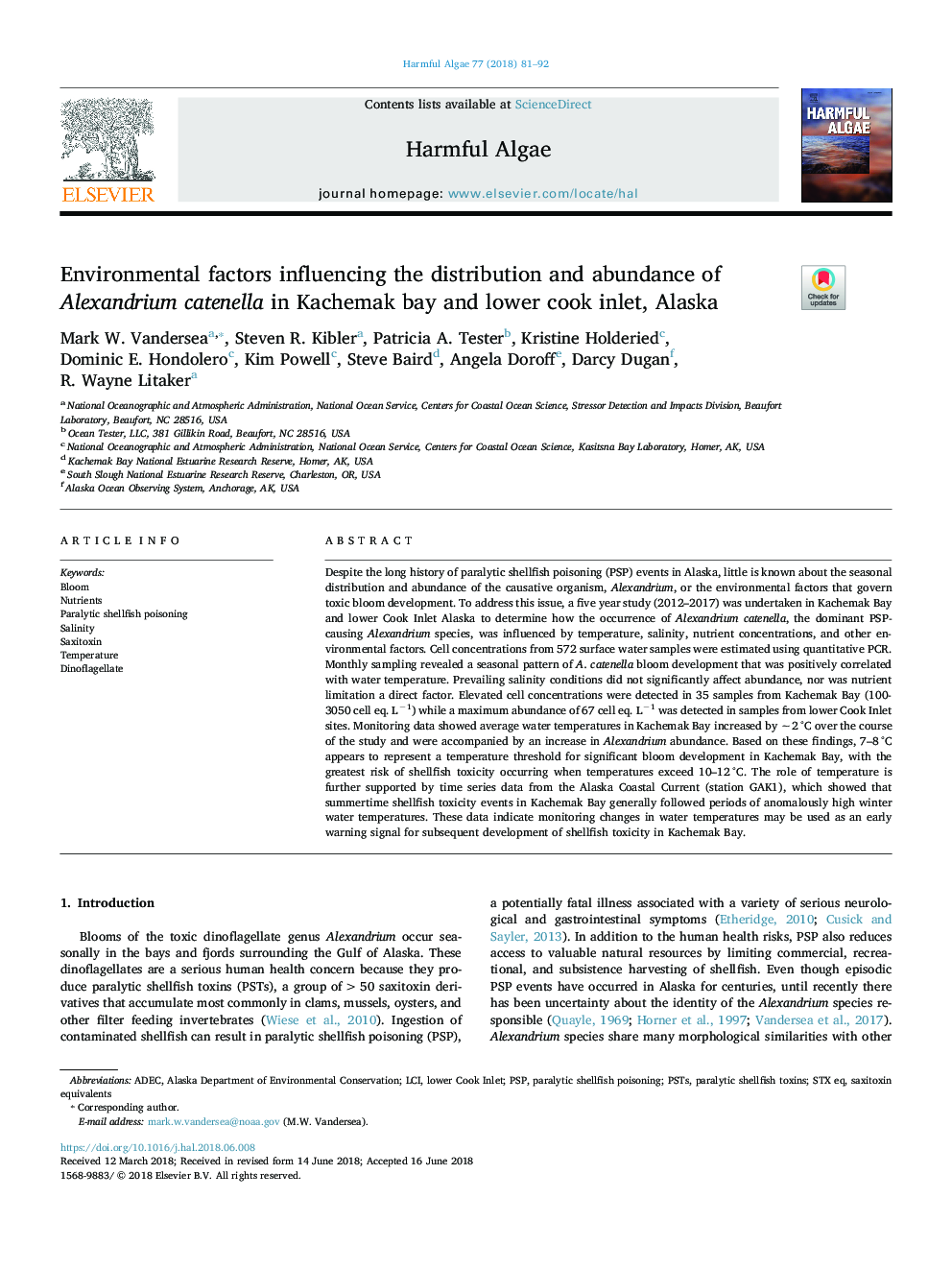| کد مقاله | کد نشریه | سال انتشار | مقاله انگلیسی | نسخه تمام متن |
|---|---|---|---|---|
| 8885644 | 1626895 | 2018 | 12 صفحه PDF | دانلود رایگان |
عنوان انگلیسی مقاله ISI
Environmental factors influencing the distribution and abundance of Alexandrium catenella in Kachemak bay and lower cook inlet, Alaska
ترجمه فارسی عنوان
عوامل محیطی تأثیرگذار بر توزیع و فراوانی کاترنل اسکندریه در خلیج کچمچک و ورودی آشپزخانه پایین،
دانلود مقاله + سفارش ترجمه
دانلود مقاله ISI انگلیسی
رایگان برای ایرانیان
کلمات کلیدی
موضوعات مرتبط
علوم زیستی و بیوفناوری
علوم کشاورزی و بیولوژیک
علوم آبزیان
چکیده انگلیسی
Despite the long history of paralytic shellfish poisoning (PSP) events in Alaska, little is known about the seasonal distribution and abundance of the causative organism, Alexandrium, or the environmental factors that govern toxic bloom development. To address this issue, a five year study (2012-2017) was undertaken in Kachemak Bay and lower Cook Inlet Alaska to determine how the occurrence of Alexandrium catenella, the dominant PSP-causing Alexandrium species, was influenced by temperature, salinity, nutrient concentrations, and other environmental factors. Cell concentrations from 572 surface water samples were estimated using quantitative PCR. Monthly sampling revealed a seasonal pattern of A. catenella bloom development that was positively correlated with water temperature. Prevailing salinity conditions did not significantly affect abundance, nor was nutrient limitation a direct factor. Elevated cell concentrations were detected in 35 samples from Kachemak Bay (100-3050 cell eq. Lâ1) while a maximum abundance of 67 cell eq. Lâ1 was detected in samples from lower Cook Inlet sites. Monitoring data showed average water temperatures in Kachemak Bay increased by â¼2â¯Â°C over the course of the study and were accompanied by an increase in Alexandrium abundance. Based on these findings, 7-8â¯Â°C appears to represent a temperature threshold for significant bloom development in Kachemak Bay, with the greatest risk of shellfish toxicity occurring when temperatures exceed 10-12â¯Â°C. The role of temperature is further supported by time series data from the Alaska Coastal Current (station GAK1), which showed that summertime shellfish toxicity events in Kachemak Bay generally followed periods of anomalously high winter water temperatures. These data indicate monitoring changes in water temperatures may be used as an early warning signal for subsequent development of shellfish toxicity in Kachemak Bay.
ناشر
Database: Elsevier - ScienceDirect (ساینس دایرکت)
Journal: Harmful Algae - Volume 77, July 2018, Pages 81-92
Journal: Harmful Algae - Volume 77, July 2018, Pages 81-92
نویسندگان
Mark W. Vandersea, Steven R. Kibler, Patricia A. Tester, Kristine Holderied, Dominic E. Hondolero, Kim Powell, Steve Baird, Angela Doroff, Darcy Dugan, R. Wayne Litaker,
